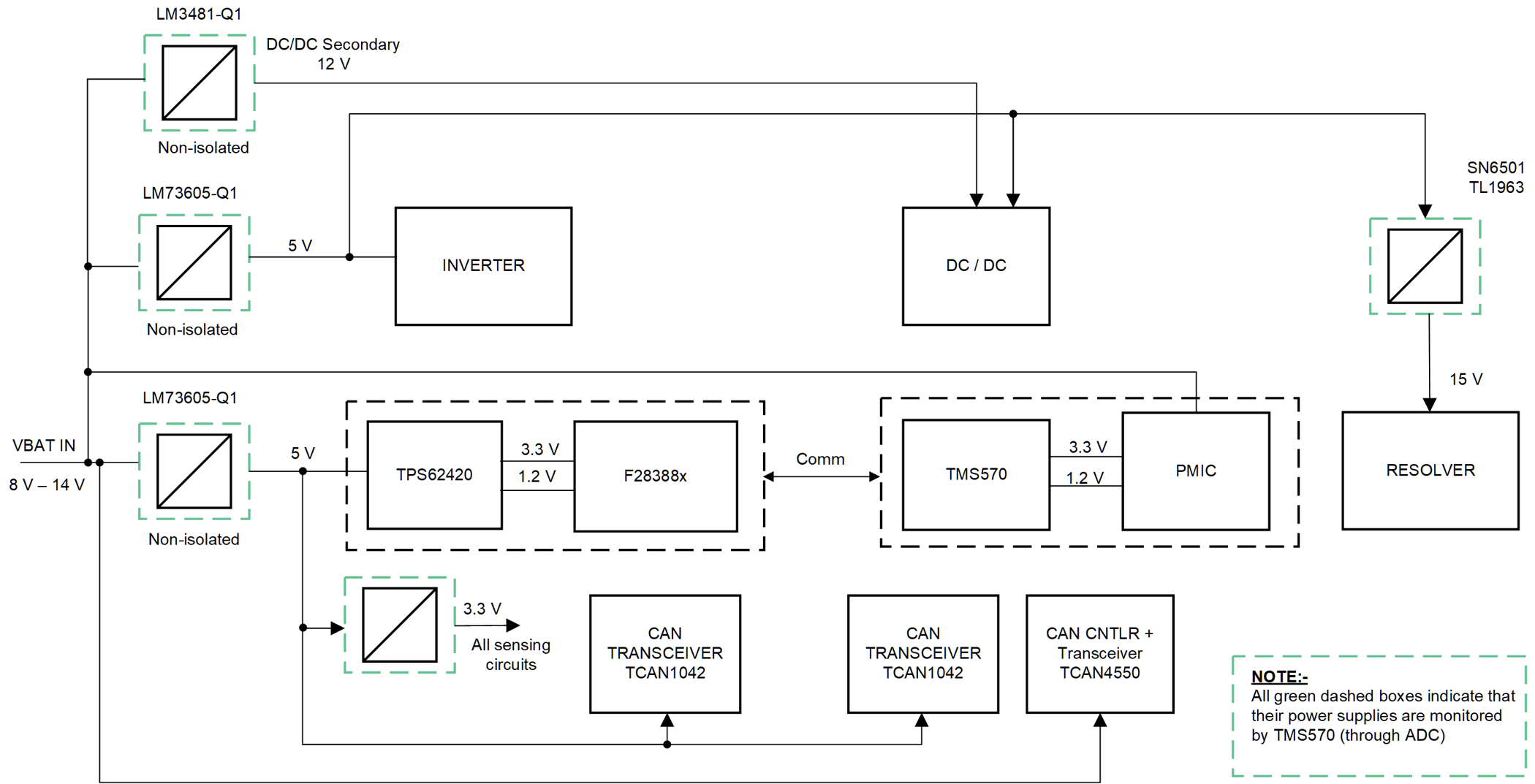TIDUEY6 April 2021
- Description
- Resources
- Features
- Applications
- 5
- 1System Description
- 2System Overview
-
3Hardware, Software, Testing Requirements, and Test Results
- 3.1
Hardware Requirements
- 3.1.1
Hardware Overview
- 3.1.1.1
Control Module
- 3.1.1.1.1
Control Mother Board
- 3.1.1.1.1.1 Inverter Safing - UCC5870 ASC and Fault Control
- 3.1.1.1.1.2 DC-DC Safing
- 3.1.1.1.1.3 DC-DC Converter Secondary PWM Selection
- 3.1.1.1.1.4 Blower Fan Control
- 3.1.1.1.1.5 Voltage Monitor
- 3.1.1.1.1.6 Resolver Interface Control
- 3.1.1.1.1.7 Test Points on Control Module
- 3.1.1.1.1.8 General Purpose Ports
- 3.1.1.1.1.9 Connectors and Headers on Control Mother Board
- 3.1.1.1.2 Power Supplies
- 3.1.1.1.3 TCAN4550 module
- 3.1.1.1.4 Dual TCAN Module
- 3.1.1.1.5 Analog Back End Module
- 3.1.1.1.6 Resolver Analog Front End Module
- 3.1.1.1.1
Control Mother Board
- 3.1.1.2 Inverter Module
- 3.1.1.3 DC-DC Bidirectional Converter Module
- 3.1.1.1
Control Module
- 3.1.1
Hardware Overview
- 3.2 Resource Mapping
- 3.3 Test Setup
- 3.4 Test Results
- 3.1
Hardware Requirements
- 4General Texas Instruments High Voltage Evaluation (TI HV EVM) User Safety Guidelines
- 5Design and Documentation Support
- 6About the Author
3.1.1.1.2 Power Supplies
Power supply is a critical requirement of the control electronics and is split up into multiple units based on isolation, noise and safety considerations. A brief outline of the power supply distribution diagram is shown in Figure 3-11. Power input to the control electronics is supposed to be from vehicle battery. For lab purposes, a power supply of 12V / 5A rating would be sufficient to feed the controller.
 Figure 3-11 Power supply
distribution
Figure 3-11 Power supply
distributionAn exclusive power supply of 5-V/5-A is designed for the C2000 MCU control card and its associated circuitry. A linear regulator is used to provide 3.3 V for the peripheral modules on the mother board that interacts with C2000 MCU.
The safety MCU control card takes in the battery voltage of 12 V. This control card has a PMIC (TPS65381A-Q1) that provides the operational voltages needed for the safety MCU and its associated on card circuits.
Another exclusive power supply of 5-V/5-A is designed primarily for generating isolated power supplies for traction inverter gate drivers. This 5-V supply is basically an intermediate stage that helps to simplify the design of subsequent gate driver power supplies. This supply is also used to feed a 15-V power supply for resolver front end and to run a blower fan for cooling inverter heat sink if needed. This power supply can be turned ON / OFF by the control and safety MCUs.
A 12-V/1-A power supply is designed to feed the secondary gate drivers of DC-DC converter
Even though these power supplies share the same GND, care is taken to separate the GND planes where ever needed and connecting them together close to the power entry to board. In the sections below, each of the power supply modules are described.